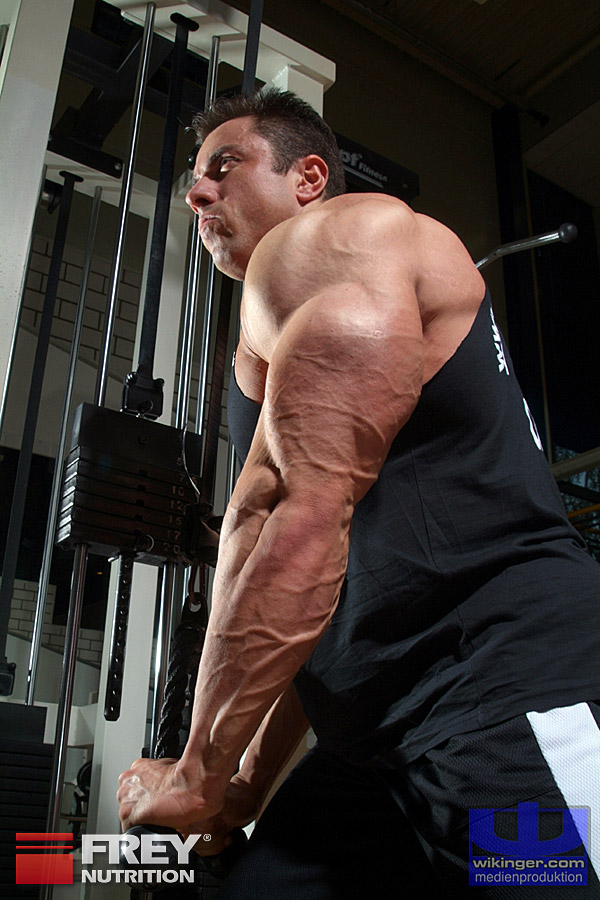ANSWER

Studies also show that muscle soreness is increased when the negative, eccentric movement of a repetition is emphasized - the very movement that has been proven to produce the greatest muscle growth because it is much more unfamiliar to the muscles.
There are various methods that can help treat muscle soreness, but it is almost impossible to avoid it. The harder you train, the more likely you are to experience the microtraumas mentioned. Stretching before and/or after a workout, for example, has no effect on the development of muscle soreness. Heat treatment can make it subside more quickly because it increases blood flow to the affected muscles.According to an American study, taking cherry juice or the antioxidants it contains reduced muscle soreness and loss of strength. However, whether this has a long-term effect on improved muscle growth remains to be seen.
I always try to train so hard and intensely that I feel a little sore the next day. I don't always manage to do this, but when I do, I know that I've done my best during training. However, you shouldn't overdo it with the soreness! As in many other areas, success lies in the happy medium: moderate muscle soreness is an advantage, but excessive soreness should be avoided.
Muscle soreness usually occurs after a long break from training or in untrained people. In this case, care should be taken not to train the affected part of the body again until the muscle soreness has completely subsided. Otherwise, the already damaged muscles can lead to further injuries, including torn fibers and partial or complete tears.
There are also athletes who almost never get sore muscles. However, that doesn't necessarily mean that they can't build muscle. Personally, I find sore muscles to be a good feeling and promote growth, but it's not an absolute must for building muscle!
If you often suffer from severe muscle soreness, this may be due to inadequate recovery. In the worst case, this can result in symptoms of overtraining, such as severe fatigue, loss of strength and/or muscle loss. If this is the case for you, I strongly advise you to reduce your training workload and get enough sleep, ideally 8-9 hours per night.If you want to effectively improve your regeneration, I can SUPPLEMENT GLUTAMINE highly recommend it. Glutamine is the most abundant amino acid in blood plasma and is used up most during intensive training. Studies show that consumption can be up to 40 g, depending on the intensity. The faster our body reabsorbs the used glutamine, the better the regeneration. For this reason, well-informed athletes take around 10-15 g of glutamine directly after training.
HOW IMPORTANT ARE EQUAL BREAKS BETWEEN SETS?
ANSWER
It's best to stick to a specific time to avoid mistakes and injuries. I personally never train without a stopwatch. I stick to an average break time of one to 1.5 minutes; for leg training, it can sometimes be three minutes due to the greater cardiovascular strain.
Sometimes I "shock" my muscles by reducing the rest time to half a minute. The pump is then phenomenal and the intensity cannot be increased by anything. One advantage is the short training time, the muscles enter the recovery phase more quickly. On the other hand, the unusual training with short rest times also stimulates muscle building. Just try it out and see what happens. Have fun and success!












